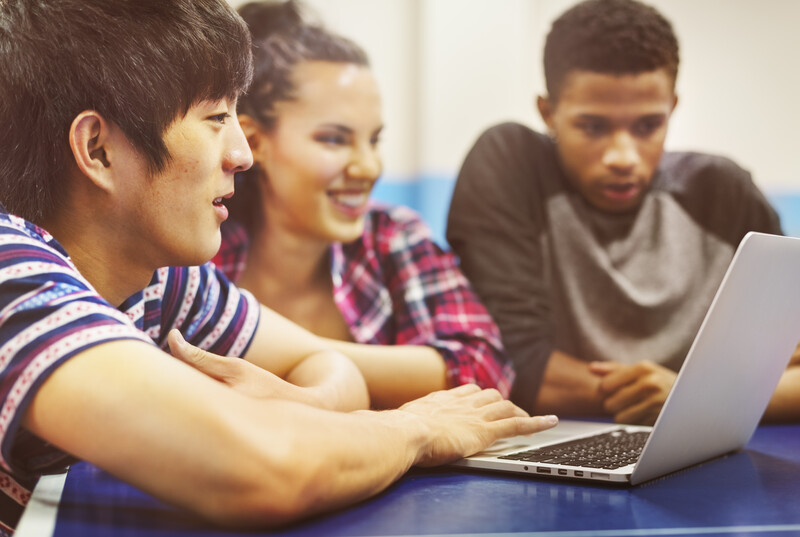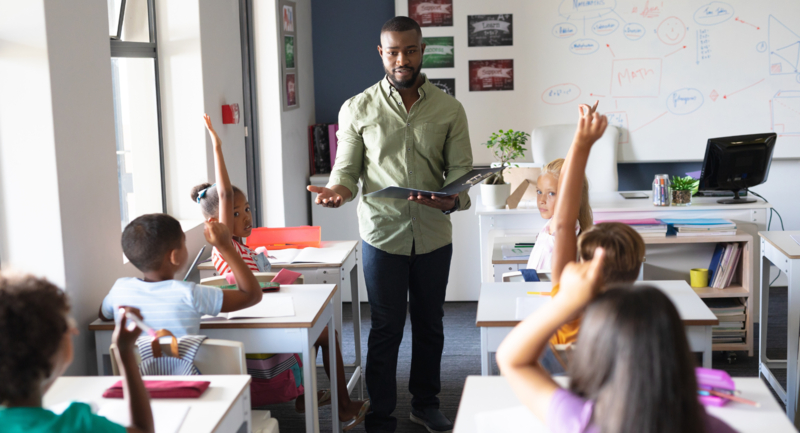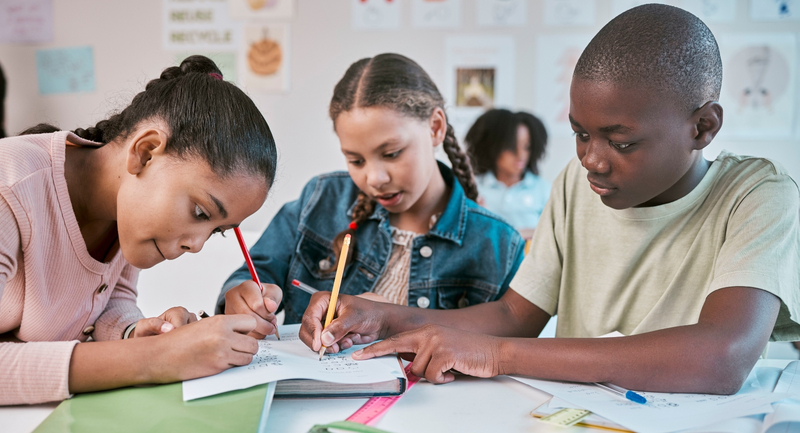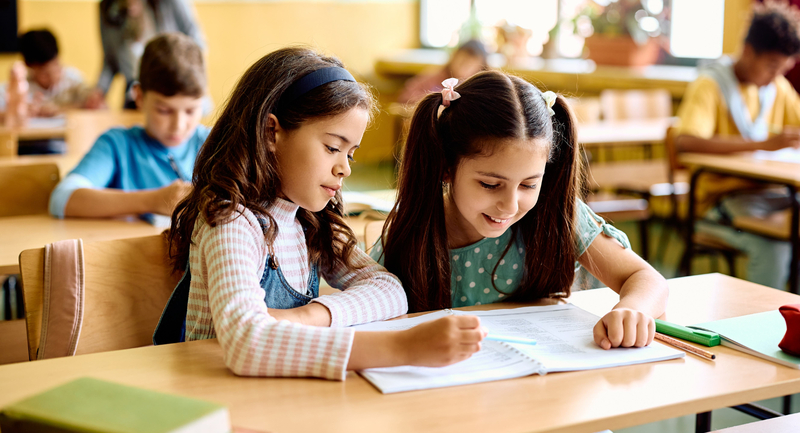Carl Sandburg wrote “Life is like an onion. You peel it off one layer at a time, and sometimes you weep.” In the last several weeks of planning for and beginning the 2020-2021 school year, I’ve felt as if this unique school year is like one big onion: multi-layered, complex, and sometimes tear-inducing.
These feelings have surfaced for me when I think about ensuring that our students with disabilities receive an equitable education in remote settings. From creating schedules to designing access to delivering accommodations in a virtual space, there are many new challenges and priorities educators must consider. With so many puzzles for us to figure out in our new educational spaces, it would be easy to despair. However, thinking about the ways we serve students with disabilities at this time is more crucial than it’s ever been. Here are three strategies I’ve found useful in my experience teaching remotely–strategies I hope help others working with students with disabilities.
1. Work Collaboratively—Including with Parents
Special education teachers or other personnel who serve students with disabilities often fill many unique roles in a school, working with several grade levels and across many subject areas. These educators sometimes feel a bit on the fringes or in limbo in a school community. We may feel as though we are disconnected or alone, and the pandemic may exacerbate such feelings of isolation.
Keep in mind, however, that kids with disabilities have IEP teams composed of general education teachers, administrators, parents, and related service providers who help develop and implement learning goals. During remote learning, these IEP teams still exist. So when you, as a teacher, encounter problems while teaching a student remotely, consider that these likely aren’t problems one person should solve alone–even if team members are physically separated. Continue using trusted methods of collaboration with team members, or develop new ones to suit changes in work demands. Relying on every IEP team member’s expertise and skill set in this new world of remote learning is imperative to ensuring the success of students with learning and thinking differences.
Families, in particular, can bring insights now about the ways their students are learning and engaging with lessons. Many educators have experienced a dynamic shift in their relationships with families during the pandemic, including a marked increase in the frequency of communication and stronger connections with parents and caregivers. Many students’ family members have been assisting them in asynchronous or synchronous learning, through navigating technology or helping the student understand the content. Checking in regularly with family members to seek their input can make your instruction more effective for your students with disabilities.
As special education teachers, we’re trained to meet our students’ learning needs through adapting and differentiating. With remote learning, we must learn to use those skills of adaptation and differentiation to also be responsive to families’ needs. Listening to students’ family members about what is and isn’t working from their perspective can be a critical way to help you alter some of your instructional methods to best reach your students with disabilities. It will also help you better anticipate specific needs and be proactive in providing specific resources.
For example, I’ve recently been creating videos to provide technology directions for families and to supplement synchronous lessons, especially for kids who miss parts of those live lessons. Many of these videos came about due to conversations I had with families about what would help their child and other students with learning differences. Understood.org—a provider of resources for students who learn differently-–explains that, during remote learning, videos can be tools for equity and access for students with learning and thinking differences. They can make written directions easier to understand, provide accommodations, and help you build relationships through personalized lessons and messages.
2. Start Small and Explicitly Teach New Skills and Routines
To help students, families, and yourself not feel overwhelmed by remote learning, start small and explicitly model, teach, and practice any new skills and routines–especially those involving technology. Remember that just as it takes concentrated time and practice for students to master the academic skills that are part of their IEP goals and objectives, it will also take them concentrated time and practice to master the computer-literacy skills needed to navigate new learning-management systems and run through new routines.
Learning from home can also be challenging for students who struggle with attention. As this article from Understood.org points out, learning from home may entail external distractions from pets and other family members, internal distractions like intense emotions, lack of structure, limited change in scenery, and less support with time management. Students with disabilities may benefit from visual-based schedules for each day of the week, especially if they work with several staff members to receive their academic lessons and IEP services. Keep in mind that it could take a student several days or even weeks to get adjusted to a schedule. Patience is key.
Scaling back all the bells and whistles of certain technology platforms is also useful in the beginning. This allows you to scaffold and go slow at first in order to later accelerate for the long haul.
3. Use UDL-Centered Approaches
If a student in your remote classroom isn’t able to comprehend or access your lesson, the problem may go beyond technology. It could be a problem with the way you are designing or delivering the information. Whether your learning situation is in-person, remote, or hybrid, it’s important to think about the ways you’re designing instruction and assessment for students, and the ways you are engaging them. Using approaches that emphasize universal design for learning (UDL) can help address the needs of not just students with disabilities, but all students.
UDL essentially involves thoughtfully planning instruction and the learning environment for the benefit of all learners by removing or lifting barriers. For example, educators should be mindful about presenting in only one presentation mode (visuals with no audio or audio with no visuals) and should accept various kinds of student participation. I give my students the choice to participate in lessons by using the chat feature of Zoom or Google Hangouts, verbally sharing answers, using hand motions and signals, or writing down answers that they hold up to the screen. By universally designing learning experiences and being intentional about not creating spaces within our remote learning environments, we can widen and strengthen our reach to all students. For more ideas on how to plan UDL-focused distance-learning lessons, see this blog post on understood.org [link to https://www.understood.org/en/school-learning/for-educators/universal-design-for-learning/how-to-plan-online-lessons-with-universal-design-for-learning-udl]. For ideas on how to best set up accommodations for learners in a remote learning environment, check out examples compiled by educator-author Amanda Morin.
While everyone’s specific teaching situation will differ, these tips can be a starting point as we peel the layers of the proverbial onion that is remote learning, especially for our students with learning differences.








